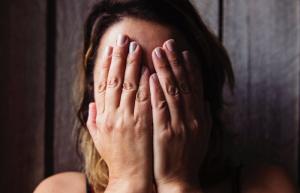Types of depression: its symptoms, causes and characteristics
It is common to feel a drop from time to time or feel sad about an event that may have happened in your life. Sadness is part of life, an emotion that is not pathological in itself, although we associate it with displeasure and try to avoid it.
However, it must be borne in mind that not all the ways in which discomfort is experienced are the same, and sometimes that what we think is sadness intrinsic to the "normal" way of living life can be one of several types of depression that exist.
In this article we will focus precisely on that topic: the main types of depression that has been shaping scientific research in mental health.
- Related article: "The 16 most common mental disorders"
Depression, a multifactorial disorder
If the suffering is persistent, you are sad most of the time and it affects your daily life, you may suffer from depression, a mood disorder that can seriously affect our lives and that also goes hand in hand with the risk of attempting to die or of developing a lifestyle that is very harmful to health in the medium and long term term.
Furthermore, depression is a very complex phenomenon, since it is not known exactly what causes it; The most widely accepted hypothesis is that it has a multifactorial origin, which is why it has both a behavioral component (that is, from the way in which we interact with the environment and perceive what happens to us) as biological (above all, based on predispositions genetic).
It is not always easy to know when this phenomenon has taken its toll on us, since there are several types of depression and therefore the ways in which its presence can be identified vary. However, all the psychopathologies that can be grouped in this category have several common characteristics, as we will see.
Let's see, then, what are the characteristics of these types of depression to know what we are facing in each case.
Types of depression and their characteristics
Depression is common in these times, and it is common for people to turn to drugs to relieve the pain that is felt with this pathology. The prozac (fluoxetine), also called the drug of happiness, is consumed regularly in developed societies.
However, the truth is that this set of psychopathologies can hardly be overcome simply by taking drugs. This is due to its complexity and the diversity of its symptoms and characteristics. While the active principle of these drugs is always the same, depressive-type disorders interact in very unforeseen ways with all the biological and contextual elements of each individual.
Drug treatment is advisable in severe cases, but psychotherapeutic support should always be available to be able to manage and overcome the types of depression (in psychological therapy, in addition, the risk of suffering side effects is very less). It is important to understand that psychologists can also help you overcome depression using their techniques and methods adapted to you to that you adopt new habits that weaken the symptoms of this disorder and favor their disappearance depending on the way in which the disorder affects you affect.
But... What are the different types of depression and how do they usually express themselves through symptoms? Depression is part of mood disorders and always affects our general well-being, our social interaction, our sexual appetite and desire, and many other behavioral aspects, but the way in which it does it depends on the specific type of depressive disorder that we have developed. These variants of depression are listed below.
1. Major depression
The major depression It is the most serious type of depression, as the name suggests, and it is characterized by the high intensity of the symptoms, and by the fact that they are present practically all day.
In this psychopathology there is the appearance of one or more depressive episodes lasting at least 2 weeks. It usually begins during adolescence or young adulthood. The person suffering from this type of depression may experience phases of normal mood between depressive phases that can last for months or years.
It is classified within the unipolar episodes since there are no phases of mania, and it can cause very serious problems for the patient if it is not treated effectively. In fact, suicidal ideation can lead to death if it translates into effective actions to end one's life.
Symptoms of Major Depression
These are some of the symptoms of major depression according to the manual DSM-IV-TR:
- Depressed mood most of the day, almost every day (1)
- Loss of interest in previously rewarding activities (2)
- Weight gain or loss
- Insomnia or hypersomnia
- Low self-esteem
- Concentration problems and trouble making decisions
- Feelings of guilt
- Suicidal thoughts
- Psychomotor agitation or retardation almost every day
- Fatigue or loss of energy almost every day
According to DSM-IV, there must be the presence of five (or more) of the above symptoms over a 2-week period, which represent a change from the previous activity; one of the symptoms must be (1) depressed mood or (2) loss of interest or the ability to feel pleasure.
Types of major depression
Within major depression, there are different types of major depression:
- Single episode depression: caused by a once-in-a-lifetime event and depression only has that onset
- Recurrent depression: Appearance of depressive symptoms in two or more episodes in the patient's life. The separation between an episode should be at least 2 months without presenting symptoms.
2. Dysthymia
Within the types of depression, thedysthymiais less severe than major depression. It is a type of unipolar depression (does not include manic symptoms) and interferes with the normal functioning and well-being of the individual who suffers from it.
The essential feature of this disorder is that the patient feels depressed for most of the day, most days for at least 2 years. It can be said that it is a kind of major depression "stretched" over time: it lasts longer, but is somewhat less intense in terms of the discomfort it generates and the danger it poses. You do not necessarily have to experience a strong sadness, but often the most common is that there is a feeling of lack of purpose and motivation, as if nothing mattered.
Many people with dysthymia can also have severe depressive episodes at some point in their life.
Symptoms of dysthymia
The main symptoms of dysthymia are the following:
- Loss or increase of appetite
- Insomnia or hypersomnia
- Lack of energy or fatigue
- Low self-esteem
- Difficulty concentrating or making decisions
- Feelings of hopelessness
3. Manic depression
This type of disorder, also called Bipolar disorder is classified as a type of mood disorder. Although we can include it within the types of depression, it combines depressive states with states of mania, that is, there are extreme ups and downs. Bipolar disorder is a serious condition, and should not be confused with an emotionally unstable state.
Treatment is different from major depression, and requires mood stabilizers (such as lithium), as well as a professional accompaniment through psychotherapy and attention to the family environment of the patients.
Symptoms of manic depression
The depressive symptoms may include:
- Persistent feelings of sadness
- Feeling hopeless or helpless
- Low self-esteem
- Feeling inept
- Excessive guilt
- Wishes to die
- Loss of interest in usual or previously enjoyed activities
- Difficulty in relationships
- Sleep disturbance (eg, insomnia, hypersomnia)
- Appetite or weight changes
- Decreased energy
- Difficult to focus
- Decreased ability to make decisions
- Suicidal thoughts or suicide attempts
- Frequent physical ailments (for example, headache, stomach pain, fatigue)
- Attempts or threats to run away
- Hypersensitivity to failure or rejection
- Irritability, hostility, aggression
The manic symptoms can include:
- Exaggerated self-esteem
- Less need for rest and sleep
- Increased distraction and irritability
- Excessive participation in pleasant and high-risk activities that can lead to painful consequences, for example provocative, destructive, or anti-social behavior (sexual promiscuity, reckless driving, alcohol and drug abuse) drugs).
- Increased loquacity (e.g. increased speed of speech, rapid subject changes, intolerance of interruptions)
- Feelings of "arousal" or euphoria
- Marked mood swings, for example unusually happy or silly, strangely angry, agitated, or aggressive
- Increased sexual desire
- Higher energy level
- Poor common sense in sensible people
4. Seasonal depressive disorder (SAD)
This depressive state is called Seasonal depressive disorder (SAD) and is characterized by occurring during a certain time of the year, usually during winter.
Symptoms generally slowly intensify in late fall and winter months. These symptoms are very similar to those that occur in other types of depression:
- Hopelessness
- Increased appetite with weight gain
- Increased sleep (poor sleep is more common with other forms of depression).
- Less energy and ability to concentrate
- Loss of interest in work and other activities
- Slow movements
- Social isolation
- Sadness and irritability
There is also another variant of SAD that some people suffer from in summer:
- Lack of appetite
- Weightloss
- Insomnia
- Irritability and anxiety
- Restlessness
5. Psychotic depression
Psychotic depression is a subtype of major depression which occurs when a severe depressive illness includes some type of psychosis. Unlike other types of depression, it is characterized by foreknowledge of symptoms psychotic: hallucinations and / or delusions that qualitatively alter the way in which the reality.
6. Postpartum depression
Within the types of depression, we can include postpartum depression. It is characterized because can occur shortly after delivery.
This type of depression can occur up to a year after the woman has given birth, although it is common for it to occur within the first three months after delivery.
Causes of postpartum depression
Some of the causes of postpartum depression are the following:
- Changes at the body level of pregnancy and childbirth (for example, due to hormonal change)
- Changes in labor and social relations
- Have less time and freedom for herself
- Changes in the sleep-wake cycle due to birth
- Concerns about your ability to be a good mother
Bibliographic references:
- American Psychiatric Association (2014). DSM-5. Diagnostic and Statistical Manual of Mental Disorders. Madrid: Panamericana.
- Belloch, A.; Sandín, B. and Ramos, F. (2010). Manual of Psychopathology. Volume I and II. Madrid: McGraw-Hill.
- Kendler, K.S.; Gardner, C.O. (1998). Boundaries of major depression: an evaluation of DSM-IV criteria. The American Journal of Psychiatry, 155 (2): pp. 172 - 177.
- Klein, D.N.; Shankman, S.A.; Rose, S. (2006). Ten-year prospective follow-up study of the naturalistic course of dysthymic disorder and double depression. The American Journal of Psychiatry, 163 (5): pp. 872 - 880.
- National Collaborating Center for Mental Health. Depression. (2009). The treatment and management of depression in adults (updated edition). National Clinical Practice Guideline Number 90. London: British Psychological Society and Royal College of Psychiatrists.
- Gilbert, D.T.; Schacter, D.L.; Wegner, D.M., eds. (2011). Psychology. New York: Worth Publishers.
- Goffman, E. (1998). Stigma. The deteriorated identity. Editorial Amorrortu, Buenos Aires, 1998 (1st edition in English: Stigma. Notes on the Management of Spoiled Identity. Prentice-Hall, Inc.
- Wright, S.L., Persad, C. (2007). Distinguishing between depression and dementia in older persons: neuropsychological and neuropathological correlates. Journal of Geriatric Psychiatry and Neurology, 20 (4): pp. 189 - 198.


